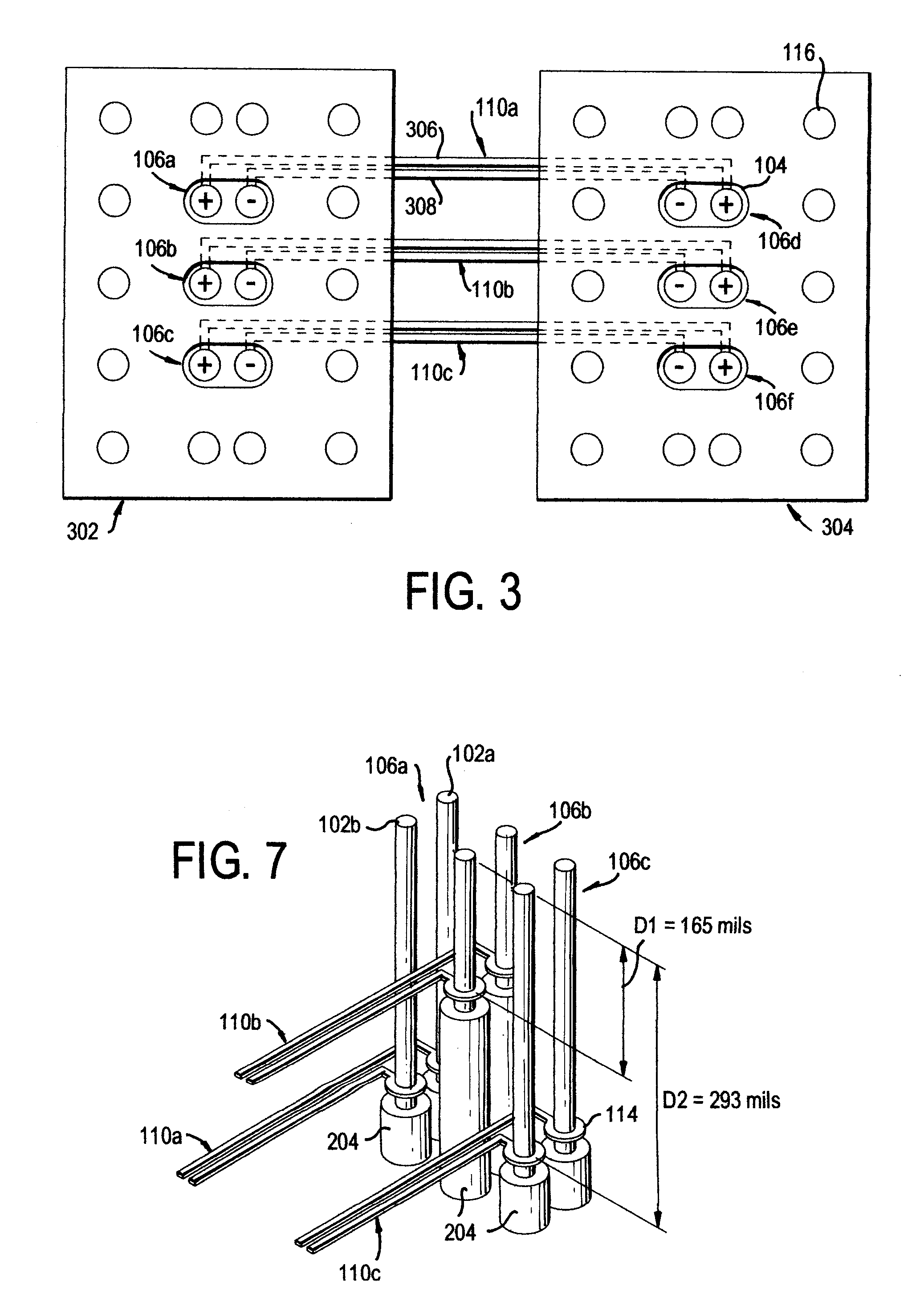Adjacent plated through holes with staggered couplings for crosstalk reduction in high speed printed circuit boards
a technology of parallel plated through holes and printed circuit boards, applied in the field of signaling systems, can solve the problems of system integrity suffer, risetime of data transition from a zero to a one becoming faster, coupling between two signal conductors, etc., and achieve the effect of minimizing crosstalk between adjacent traces
- Summary
- Abstract
- Description
- Claims
- Application Information
AI Technical Summary
Benefits of technology
Problems solved by technology
Method used
Image
Examples
Embodiment Construction
[0026]Referring to FIGS. 1-10, the present invention relates to an electrical signal connection that minimizes electromagnetic coupling or crosstalk between adjacent traces 110a-110c. Minimizing crosstalk decreases the distortions in signals transmitted by adjacent traces 110a-110c. Crosstalk is minimized by locating adjacent traces 110a-110c on different layers 108 of a printed circuit board 100. A distance between the adjacent traces 110a-110c is configured to minimize crosstalk of a certain frequency. As the distance is decreased, a higher frequency of crosstalk is minimized, and in a similar fashion, a larger distance results in minimizing crosstalk of a lower frequency. Also, if the distance between adjacent traces 110a-110c is configured for a particular frequency and the distance is maintained between adjacent traces 110a-110c, the adjacent traces 110a-110c can be located on any layer 108 and still minimize the crosstalk for that particular frequency.
[0027]Referring to FIG. 1...
PUM
 Login to View More
Login to View More Abstract
Description
Claims
Application Information
 Login to View More
Login to View More - R&D
- Intellectual Property
- Life Sciences
- Materials
- Tech Scout
- Unparalleled Data Quality
- Higher Quality Content
- 60% Fewer Hallucinations
Browse by: Latest US Patents, China's latest patents, Technical Efficacy Thesaurus, Application Domain, Technology Topic, Popular Technical Reports.
© 2025 PatSnap. All rights reserved.Legal|Privacy policy|Modern Slavery Act Transparency Statement|Sitemap|About US| Contact US: help@patsnap.com



